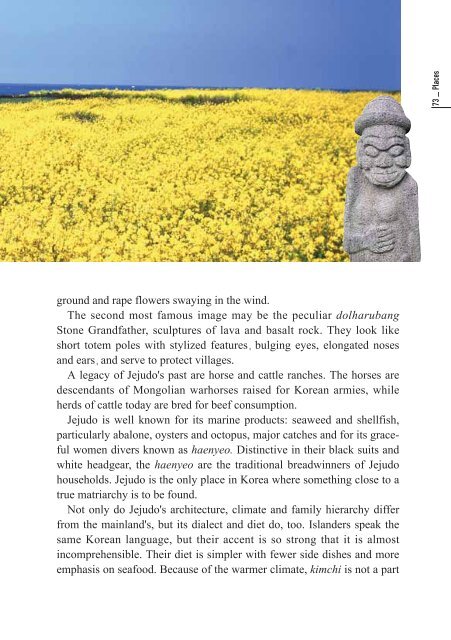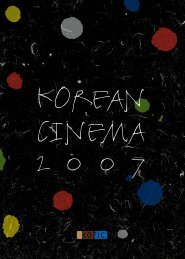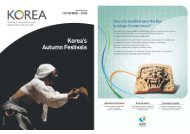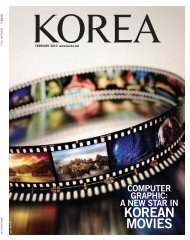HELLO from KOREA
Hello-Eng(3.3) - Korea.net
Hello-Eng(3.3) - Korea.net
- No tags were found...
Create successful ePaper yourself
Turn your PDF publications into a flip-book with our unique Google optimized e-Paper software.
ground and rape flowers swaying in the wind.<br />
The second most famous image may be the peculiar dolharubang<br />
Stone Grandfather, sculptures of lava and basalt rock. They look like<br />
short totem poles with stylized features bulging eyes, elongated noses<br />
and ears and serve to protect villages.<br />
A legacy of Jejudo's past are horse and cattle ranches. The horses are<br />
descendants of Mongolian warhorses raised for Korean armies, while<br />
herds of cattle today are bred for beef consumption.<br />
Jejudo is well known for its marine products: seaweed and shellfish,<br />
particularly abalone, oysters and octopus, major catches and for its graceful<br />
women divers known as haenyeo. Distinctive in their black suits and<br />
white headgear, the haenyeo are the traditional breadwinners of Jejudo<br />
households. Jejudo is the only place in Korea where something close to a<br />
true matriarchy is to be found.<br />
Not only do Jejudo's architecture, climate and family hierarchy differ<br />
<strong>from</strong> the mainland's, but its dialect and diet do, too. Islanders speak the<br />
same Korean language, but their accent is so strong that it is almost<br />
incomprehensible. Their diet is simpler with fewer side dishes and more<br />
emphasis on seafood. Because of the warmer climate, kimchi is not a part<br />
73 _ Places
















